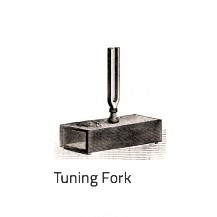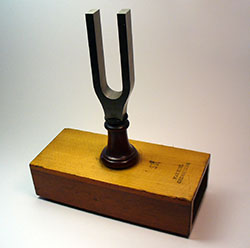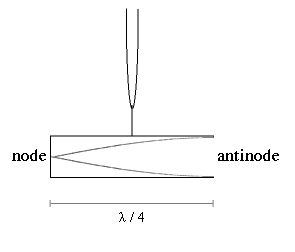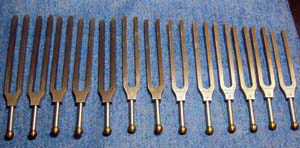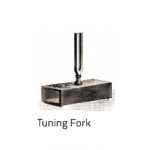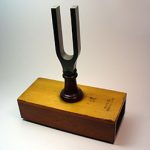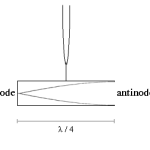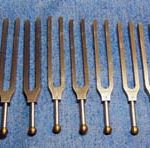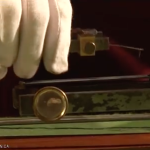Artefacts
Tuning fork on resonator
Tuning fork on resonator
The Case Collection of Physics Instruments (CCPI) has several dozen forks mounted on resonance boxes (see Fig. 1).
These were used as frequency standards in research and lecture demonstrations.
The addition of the resonance box was first made in 1839 by the French instrument maker, Albert Marloye (1785-1874). The resonance box has one open end, and a length typically one quarter of the sounded wavelength in air (λ). The standing wave in the box has a node at the closed end, and an anti-node at the open end, as shown in the diagram. This results in a sound that is more focused and louder than the tuning fork alone.
Although a resonance box can amplify the sound produced by a tuning fork, the sound will still dissipate with time. Thus, around 1860, Hermann von Helmholtz and Rudolph Koenig devised and produced an electromagnetically-driven tuning fork that would continuously sound at a specific frequency. A circuit contact is located just within reach of the tuning fork when it is in motion. When the fork vibrates, it continually makes and breaks the connection between a battery and a wire coil, which in turn produces a magnetic field which drives the motion of the fork. (An example is pictured at here.)
Text & figures by Brian Tinker, republished with the kind permission of Case Western Reserve University and William Fickinger, Prof Emeritus of Physics.
© 2015 – 2025 Humboldt-Universität zu Berlin

